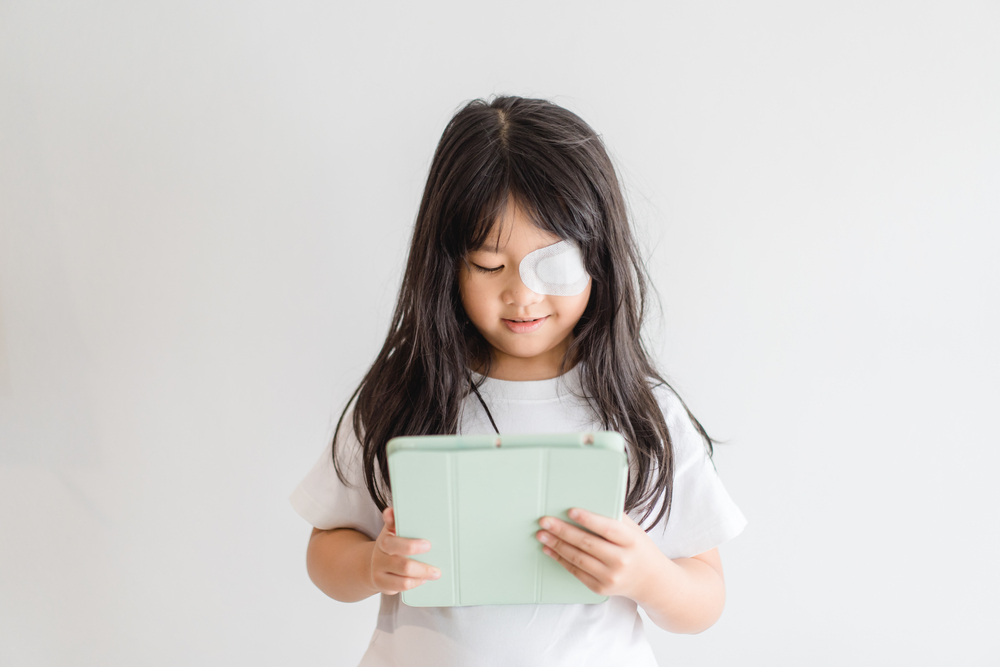
Amblyopia, commonly known as “lazy eye,” is a condition that develops in early childhood when the brain favors one eye over the other, resulting in reduced vision in the weaker eye. Left untreated, amblyopia can lead to long-term vision problems. Early diagnosis and treatment, such as eye patching, can effectively improve visual acuity and restore balance between the eyes.
What Is Amblyopia?
Amblyopia occurs when the brain suppresses input from one eye, causing it to rely more heavily on the stronger eye. This imbalance can be caused by several factors, including misaligned eyes (strabismus), a difference in refractive errors between the two eyes, or visual obstruction like cataracts. While the affected eye may appear normal, it doesn't communicate properly with the brain, resulting in impaired vision.
How Does Eye Patching Work?
Eye patching is one of the most common and effective treatments for amblyopia. By covering the stronger eye, the brain is forced to use the weaker eye, encouraging it to develop better visual function. The goal of patching is to stimulate the brain to recognize and process information from both eyes equally, eventually improving vision in the amblyopic eye.
When Should Eye Patching Begin?
Early intervention is crucial when treating amblyopia. The brain is most responsive to changes during early childhood, typically between the ages of 2 and 8. The earlier amblyopia is diagnosed and treated, the better the outcome. However, even older children and adults with amblyopia can benefit from eye patching when combined with vision therapy or other treatments.
How Often Should the Patch Be Worn?
The duration of patching depends on the severity of amblyopia and the age of the child. For mild amblyopia, a few hours of patching each day may be sufficient. For more severe cases, patching might be required for most of the day. Your optometrist at Vista Eyecare will determine the appropriate patching schedule based on your child's specific needs.
Is Eye Patching Uncomfortable for Children?
While eye patching is generally safe and effective, some children may initially resist wearing a patch. It’s important to offer encouragement and create a positive environment to help your child adjust. You can make the process fun by decorating the patch or offering rewards for wearing it. Over time, children typically become more comfortable with patching, especially as they begin to notice improvements in their vision. There are different types of patches so if your child is having problems wearing the patch, there are other options we can look at. Sometimes special eye drops are used as a form of patching for kids that refuse to wear their patch. We want to make this process as easy and comfortable for your child as possible.
Monitoring Progress
Regular follow-up appointments are essential to track your child’s progress and adjust the treatment plan as needed. Your doctor will monitor improvements in visual acuity, eye alignment, and overall function. As the weaker eye strengthens, the need for patching may decrease until both eyes are functioning equally.
Schedule a Consultation with Vista Eyecare Today
Eye patching plays a vital role in treating amblyopia by encouraging the weaker eye to develop normal vision. With early intervention and consistent treatment, many children can achieve significant improvements in their visual acuity. At Vista Eyecare, we’ll work with you to create a personalized treatment plan that supports your child’s visual health and development.
If you have any concerns about amblyopia or other vision issues, contact Vista Eyecare to schedule an appointment. Visit our office in Saskatoon, Saskatchewan, or call (306) 955-3811 to book an appointment today.





